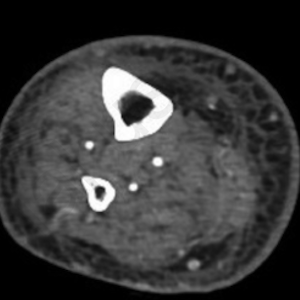An unusual case of Escherichia coli cellulitis and bacteremia in an immunocompetent patient
 Smart Citations
Smart CitationsSee how this article has been cited at scite.ai
scite shows how a scientific paper has been cited by providing the context of the citation, a classification describing whether it supports, mentions, or contrasts the cited claim, and a label indicating in which section the citation was made.
Cellulitis secondary to Escherichia coli (E. coli) is a rare phenomenon, particularly in an immunocompetent patient. We report an unusual case of an immunocompetent 84-year-old female presenting with E.coli bacteremia and E. coli cellulitis in the right lower leg. We postulate that bacterial translocation from the gastrointestinal tract to the bloodstream is the most likely source of E. coli infection. Whilst a common condition, cellulitis can pose a diagnostic and therapeutic challenge when a causative organism is not identified. Thorough investigation and consideration of atypical organisms such as E.coli are essential to permit targeted antimicrobial therapy and prevent patient deterioration.





 https://doi.org/10.4081/dr.2023.9603
https://doi.org/10.4081/dr.2023.9603






